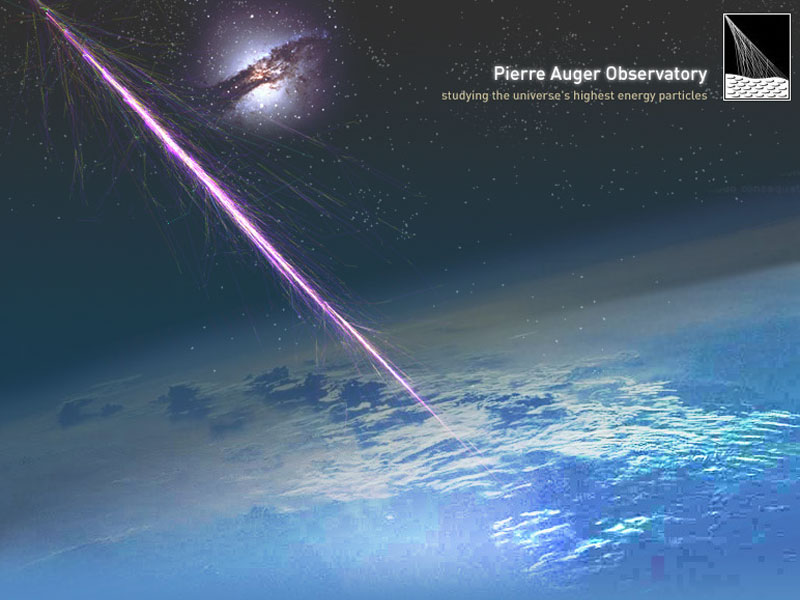
|
Credit: Pierre Auger Observatory Team,
Explanation:
Where do
cosmic rays
come from?
A major step toward answering this
century old question
may have just come in from the
Auger Observatory project,
the world's premier cosmic ray observatory.
That high energy fundamental particles are barreling through the universe has been
known for about a century.
Because ultra high energy cosmic rays are so rare and because their
extrapolated directions are so imprecise, no progenitor objects have ever been
unambiguously implied.
New results
from Auger, however, indicate that 12 of 15 ultra high energy cosmic rays have
sky directions statistically consistent with the positions of nearby
active galactic nuclei.
These
galactic centers
are already known to emit great amounts of light and are likely powered by large
black holes.
The Auger results also
indicate
that the
highest energy cosmic rays
are protons, since the electric charge of higher energy nuclei would force the
Milky Way Galaxy's
magnetic field
to deflect and effectively erase progenitor source direction.
Pictured above, an artist illustrates a
cosmic ray striking the Earth's atmosphere and
creating a shower of secondary particles detectable on the surface.
The image of
Centaurus A digitally superposed near the top
signifies one such active galaxy from which
cosmic rays might originate.
|
January February March April May June July August September October November December |
| ||||||||||||||||||||||||||||||||||||||||||||||||
NASA Web Site Statements, Warnings, and Disclaimers
NASA Official: Jay Norris. Specific rights apply.
A service of: LHEA at NASA / GSFC
& Michigan Tech. U.
Based on Astronomy Picture
Of the Day
Publications with keywords: cosmic rays
Publications with words: cosmic rays
See also:
